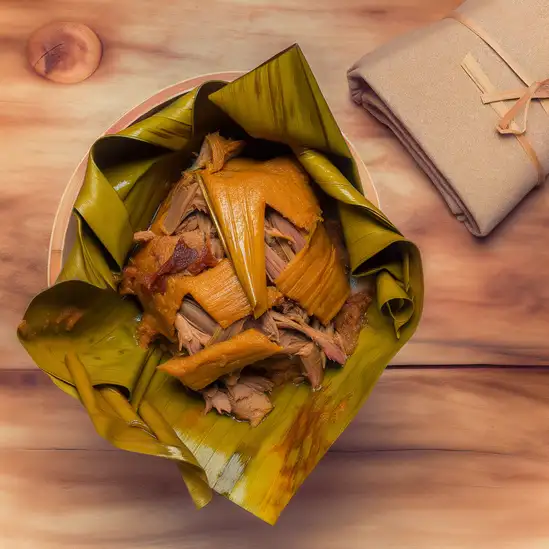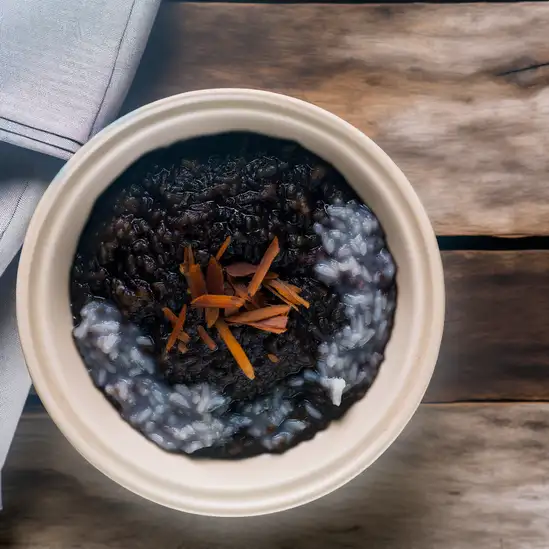


If you’re craving a place where the pace slows just enough to savor every moment,Sanur is that kind of spot. It’s got this gentle,welcoming vibe that feels like a warm hug after a long journey. Imagine waking up to the soft murmur of waves lapping against a calm,sandy beach,with fishing boats bobbing lazily on the horizon. The sun rises here in a way that feels almost sacred,casting golden hues over the water and lighting up the palm trees that line the shore. It’s peaceful but never dull—there’s a quiet rhythm to life that invites you to breathe deeply and just be. Walking through Sanur’s streets,you’ll catch the scent of frangipani and salty sea air mingling with the aroma of freshly brewed Balinese coffee and sizzling street food. The local markets buzz with friendly chatter,colorful textiles,and the vibrant energy of artisans crafting everything from intricate wood carvings to delicate silver jewelry. It’s a place where tradition and everyday life blend seamlessly,and you can feel the genuine warmth of the community in every smile and nod. What really makes Sanur stand out is its balance—laid-back beach days paired with rich cultural experiences. You can paddle out early for a serene kayak trip,then spend the afternoon exploring ancient temples or enjoying a leisurely meal of spicy sambal and fresh seafood at a beachfront warung. It’s a place that invites you to slow down,soak in the beauty,and leave with a heart full of calm and stories to tell.
The information on this page is currently being reviewed by Tripkliq and should be used as a guide only
Eng word: Hello
Eng pronunciation: HAH-loh
Local language: Halo
Eng word: Goodbye
Eng pronunciation: suh-LAH-maht TING-gahl
Local language: Selamat tinggal
Eng word: Thank you
Eng pronunciation: teh-REE-mah KAH-see
Local language: Terima kasih
Eng word: How much
Eng pronunciation: buh-RAH-pah
Local language: Berapa
Eng word: Toilet
Eng pronunciation: TOY-let
Local language: Toilet
Eng word: Help me
Eng pronunciation: TOH-long SAH-yah
Local language: Tolong saya
Eng word: Yes
Eng pronunciation: YAH
Local language: Ya
Eng word: No
Eng pronunciation: TEE-dahk
Local language: Tidak
Eng word: Excuse me
Eng pronunciation: puhr-MEE-see
Local language: Permisi
Sanur has a rich history as an ancient trading port, where merchants from China, India, and other parts of Asia would come to trade goods. This historical significance has contributed to the cultural diversity seen in Sanur today.
The Blanjong Pillar, located in Sanur, is one of Bali's oldest historical artifacts. Dating back to the 10th century, this stone pillar is inscribed with ancient Javanese and Sanskrit text, providing a glimpse into Bali's early history.
During World War II, Sanur was a strategic location for both the Dutch and Japanese forces. The beach was used as a landing site, and remnants of this period can still be found in the area.
The Le Mayeur Museum in Sanur was once the home of Belgian painter Adrien-Jean Le Mayeur de Merpres. The museum showcases his works and offers insight into his life and his love for Balinese culture and his wife, Ni Pollok.
Sanur is home to Bali's first hotel, the Bali Beach Hotel, which opened in 1966. This marked the beginning of Bali's tourism industry and Sanur's transformation into a popular tourist destination.
Sanur is surrounded by traditional Balinese villages that have preserved their customs and way of life. Visitors can experience authentic Balinese culture, including traditional ceremonies and crafts.
Sanur Beach is famous for its stunning sunrises. The calm waters and beautiful morning light make it a perfect spot for early morning walks and photography.
Pura Blanjong Temple is a significant historical and religious site in Sanur. It houses the Blanjong Pillar and is an important place of worship for the local Balinese Hindu community.
Sanur is known for its beautiful coral reefs, which are part of the Coral Triangle. These reefs are home to diverse marine life and are a popular spot for snorkeling and diving.
In Sanur, the most common Power Adaptor is Type C, Type F.



A Balinese version of satay made from minced meat mixed with grated coconut and spices, wrapped around bamboo sticks and grilled.

A traditional salad made from finely chopped vegetables, coconut, and minced meat, seasoned with herbs and spices, often served as a side dish.

A mixed rice dish served with a variety of side dishes, including meats, vegetables, and sambal, often enjoyed for breakfast or lunch.

A salad of boiled vegetables, tofu, and hard-boiled eggs, served with a peanut sauce dressing, popular as a vegetarian option.

Spiced chicken that is marinated and then wrapped in banana leaves before being slow-cooked, resulting in a rich and aromatic flavor.

Slow-cooked duck marinated with a blend of spices and wrapped in banana leaves, resulting in tender and flavorful meat.

A traditional black rice pudding made with glutinous rice, coconut milk, and palm sugar, often enjoyed as a dessert.
If you ever find yourself craving a place where time slows down just enough to savor every moment,Ubud is that kind of sanctuary. Nestled in the lush heart of Bali,this town hums with a gentle rhythm—part spiritual retreat,part creative hub. Walking through its streets,you’ll catch the scent of frangipani and incense mingling with the earthy aroma of wet rice fields nearby. The air feels alive,filled with the soft chatter of locals,the distant clink of gamelan music,and the occasional call of a rooster greeting the dawn.
Ubud’s charm lies in its seamless blend of tradition and artistry. Temples with intricate stone carvings peek through vibrant greenery,while open-air markets burst with colorful textiles,hand-carved masks,and fresh tropical fruits. You can sip on a rich,earthy cup of Balinese coffee at a cozy café,watching artisans craft delicate silver jewelry or dancers rehearsing for an evening performance. It’s a place where culture isn’t just observed—it’s lived and breathed.
What really stays with you is the warmth of the people and the sense of connection to nature and spirit. Whether you’re wandering through the terraced rice paddies,joining a yoga class overlooking the jungle,or simply sitting by the Campuhan Ridge Trail at sunset,Ubud invites you to slow down,breathe deeply,and soak in a world that feels both ancient and vibrantly alive.
Imagine stepping into a place where the sun kisses your skin,the ocean hums a steady rhythm,and the air carries the scent of salty waves mixed with sizzling street food. That’s Kuta for you—a lively beach town in Bali that pulses with energy but still feels effortlessly laid-back. From the moment you arrive,you’re wrapped in a warm,welcoming vibe that’s both vibrant and relaxed. The beach stretches wide,dotted with surfers catching waves and locals selling fresh coconut water,while the sunset paints the sky in fiery oranges and pinks.
Walking through Kuta’s streets,you’ll hear a blend of languages,laughter,and the occasional beat of gamelan music drifting from a nearby warung. The town’s character is a colorful mix of traditional Balinese culture and a buzzing international crowd,creating a unique atmosphere where ancient temples sit just blocks away from lively markets and buzzing nightlife. The aroma of satay grilling over open flames mingles with the tropical flowers blooming nearby,inviting you to slow down and savor every moment.
What makes Kuta truly special is how it balances excitement with ease. Whether you’re learning to surf,bargaining for handmade crafts,or simply lounging on the beach with a fresh mango smoothie in hand,there’s a genuine warmth in the air. It’s a place that invites you to dive into its rhythm,soak up its stories,and leave with a heart full of memories and a little more sun-kissed than when you arrived.
If you’re dreaming of a place where laid-back beach vibes meet vibrant energy,Seminyak is that sweet spot. Imagine waking up to the gentle hum of waves brushing against golden sands,the salty breeze mingling with the scent of frangipani and sizzling street food. It’s a place where mornings start slow with a fresh coconut in hand,and the day unfolds with a mix of chic boutiques,bustling markets,and cozy cafes spilling onto sun-dappled streets.
What really makes Seminyak special is its effortless blend of tradition and trend. You’ll find ancient Balinese temples tucked between sleek beach clubs,and local artisans selling handwoven textiles right next to stylish galleries. The town pulses with a creative spirit—whether it’s the vibrant street art,the soulful sounds of gamelan music drifting from a nearby ceremony,or the tantalizing aroma of spices from warungs cooking up authentic dishes.
As the sun dips low,Seminyak transforms. The sky blazes with fiery oranges and pinks,and the beach comes alive with laughter,clinking glasses,and the soft strum of guitars. Dinner might be fresh seafood grilled over coconut husks or a plate of spicy satay enjoyed under twinkling fairy lights. It’s a place that invites you to slow down,soak in the moment,and savor the rich tapestry of sights,sounds,and flavors that make this corner of Bali unforgettable.
Denpasar has this vibrant,lived-in energy that instantly pulls you in. It’s not the polished tourist hub you might expect from Bali,but rather the bustling heart where locals go about their daily lives with warmth and rhythm. Walking through its streets,you’ll hear the hum of motorbikes weaving through traffic,the chatter of market vendors calling out fresh produce,and the occasional clang of temple bells weaving into the city’s soundtrack. The air carries a mix of fragrant spices,sizzling street food,and the earthy scent of incense from nearby shrines.
What I love most about Denpasar is how it feels like a genuine slice of Balinese culture. The city pulses with tradition—colorful ceremonies unfold in the temples,and you’ll spot locals dressed in sarongs,carrying offerings with quiet reverence. At the same time,there’s a youthful buzz in the cafes and art spaces,where creativity bubbles alongside age-old customs. It’s a place where you can savor a plate of spicy babi guling from a humble warung,then wander through the art markets filled with intricate wood carvings and vibrant paintings.
Denpasar invites you to slow down and soak in the everyday magic—the warmth of the people,the rich smells,and the lively streets. It’s a city that doesn’t shout for attention but rewards those who take the time to explore its layers. If you want to experience Bali beyond the beaches,Denpasar offers a genuine,colorful glimpse into the island’s soul.
Imagine stepping onto Gili Trawangan and instantly feeling the world slow down. This little island off the coast of Lombok pulses with a laid-back energy that’s both refreshing and contagious. No cars or motorbikes here—just the gentle clatter of horse-drawn carts and the rhythmic splash of waves against white sandy beaches. The air carries a salty tang mixed with the sweet aroma of tropical flowers and sizzling satay from beachside warungs. As the sun dips low,the sky bursts into shades of pink and orange,casting a warm glow over the turquoise waters.
What makes Gili Trawangan truly special is its blend of vibrant island life and serene natural beauty. Days drift by snorkeling alongside graceful sea turtles or cycling through palm-fringed paths,while evenings come alive with the laughter of travelers sharing fresh seafood dinners under starlit skies. The island’s community feels like a patchwork of friendly faces from all over the world,united by a love for simple pleasures and adventure.
There’s a rhythm here that invites you to slow down and savor every moment—the crunch of coral underfoot,the hum of reggae tunes from a beach bar,the cool splash of the ocean after a day in the sun. Gili Trawangan isn’t just a place to visit; it’s a place to feel alive,to connect,and to create stories you’ll want to tell again and again.
Labuan Bajo feels like stepping into a vibrant postcard where the sea meets rugged hills,and every sunset paints the sky in fiery oranges and pinks. When you arrive,there’s this laid-back energy that wraps around you—locals chatting over fresh fish markets,the salty breeze mingling with the scent of tropical flowers,and boats bobbing gently in the harbor. It’s a place where time slows down just enough for you to soak in the simple beauty of island life.
Walking through the town,you’ll hear the lively chatter of fishermen,the clinking of glasses at cozy beachfront cafes,and the distant call of exotic birds. The streets are dotted with colorful warungs serving up spicy sambal and freshly grilled seafood that tastes like it was caught just moments ago. There’s a warmth in the smiles of the people here,a genuine friendliness that makes you feel instantly welcome.
What really sets Labuan Bajo apart is its gateway to the Komodo National Park. Beyond the town’s charm,you can dive into crystal-clear waters teeming with vibrant coral reefs or trek through dry savannahs to spot the legendary Komodo dragons. It’s a place where adventure and tranquility coexist,where you can lose yourself in nature’s wonders and then return to a hammock overlooking the calm sea,feeling utterly content. Trust me,Labuan Bajo isn’t just a destination—it’s an experience that stays with you long after you leave.
Some ATMs may be tampered with skimming devices to steal card information and PINs from unsuspecting users.
Vendors on the beach may charge exorbitant prices for souvenirs, food, or drinks, targeting tourists who are unaware of fair prices.
Money changers may advertise attractive exchange rates but use sleight of hand to shortchange tourists during the transaction.
Scammers posing as police officers may stop tourists and demand on-the-spot fines for fabricated offenses.
Scammers may sell fake tickets for ferries, attractions, or events, leaving tourists stranded or unable to access the service.
Scammers may sell fake or overpriced tour packages that either don't exist or are of much lower quality than promised.
Tourists may be accused of damaging rented motorbikes, even if the damage was pre-existing, and are forced to pay hefty repair fees.
Some spas may charge tourists significantly higher prices than locals for the same services, often without clear pricing upfront.
Individuals, sometimes with children, may approach tourists claiming to need money for emergencies, but the stories are fabricated.
Some taxi drivers may refuse to use the meter and charge inflated prices, especially for tourists unfamiliar with local rates.
Indonesia has very strict laws regarding drugs, including in Sanur. The possession, use, or trafficking of illegal drugs can result in severe penalties, including long prison sentences and even the death penalty. Tourists should avoid any involvement with illegal drugs and be aware that even small quantities can lead to serious legal consequences. Prescription medications should be carried with a doctor's note or prescription to avoid any issues with local authorities.
In Sanur, Indonesia, smoking is generally allowed in outdoor areas, but it is prohibited in many indoor public spaces such as restaurants, bars, and public transportation. There are designated smoking areas in some public places, and it is important to look for signs indicating where smoking is permitted. Tourists should be mindful of local customs and regulations to avoid fines or other penalties.
Vaping is subject to similar regulations as smoking in Sanur. It is generally allowed in outdoor areas but prohibited in indoor public spaces. Some establishments may have specific rules regarding vaping, so it is advisable to ask for permission or look for designated vaping areas. As with smoking, tourists should be respectful of local regulations and customs.
What are other people saying about Sanur?
Recent Social posts about Sanur
There is nothing to show you for now.